5,5'-(2,5-FURANDIYL)BIS-2-THIOPHENEMETHANOL
Synonym(s):NSC 652287, 2,5- bis-(5-Hydroxymethyl-2-thienyl)-furan, Reactivation of p53 and Induction of Tumor cell Apoptosis, MDM2 Antagonist VII, MDM2 Inhibitor X;p53 Activator III, RITA - CAS 213261-59-7 - Calbiochem
- CAS NO.:213261-59-7
- Empirical Formula: C14H12O3S2
- Molecular Weight: 292.37
- MDL number: MFCD03235294
- EINECS: 200-256-5
- SAFETY DATA SHEET (SDS)
- Update Date: 2024-11-19 20:33:22

What is 5,5'-(2,5-FURANDIYL)BIS-2-THIOPHENEMETHANOL?
Description
RITA (reactivation of p53 and induction of tumor cell apoptosis, 213261-59-7) binds to p53 (Kd = 1.5 nM), changing its conformation, preventing it from binding to HDM2 and preventing its proteasomal degradation.1 It also weakly (computed Kd = 22 μM) binds HDM2 in the cleft that contacts the p53 transactivation domain.2 Its restoration of mutant p53 function depends on eIF2α phosphorylation, and it induces apoptosis via p53-dependent and -independent (JNK/SAPK/p38; protein translation) pathways.3-5 Induces senescence in head and neck cancer cells.6
The Uses of 5,5'-(2,5-FURANDIYL)BIS-2-THIOPHENEMETHANOL
NSC 652287, a DNA damaging agent. It induces p53 tumor suppressor protein.
The Uses of 5,5'-(2,5-FURANDIYL)BIS-2-THIOPHENEMETHANOL
A cell-permeable, p53-targeting, tricyclic thiophene derivative
What are the applications of Application
p53 Activator III, RITA is a trycyclic thiophene derivative that binds MDM2, activates p53 and induces apoptosis
Definition
ChEBI: [5-[5-[5-(hydroxymethyl)-2-thiophenyl]-2-furanyl]-2-thiophenyl]methanol is a member of thiophenes.
Biological Activity
Anti-tumor agent that binds wild-type p53 (K d = 1.5 nM) preventing p53-MDM2 (HDM2) interaction. Induces p53 accumulation and stimulates apoptosis in tumor cell lines expressing wild-type p53 in vitro and in vivo .
in vitro
a number of cell lines showed a striking differential sensitivity to nsc 652287 when compared with the other cell lines in the panel, with gi50 values of 10–60 nm. the compound was found to decrease the initial number of cells by 50% (lc50) at a concentration of 100 nm in the a-498 cell line, compared with ~100 mm for the majority of the tumor cell lines. the a-498 and tk-10 cell lines were particularly sensitive to nsc 652287-induced cytotoxicity compared with achn and uo-31 cell lines [1].
in vivo
nsc 652287 was evaluated against a-498 tumor cell xenografts grown subcutaneously in nude mice. when nsc 652287 was administered twice a day, all three doses resulted in complete tumor regression in 100% of the treated mice by the end of the third treatment period. the tumors did not regrow during the remaining 40 days of the study, and no gross evidence of toxicity was observed. studies with xenografts derived from other sensitive cell lines including the renal caki-1, melanoma uacc-257, ovarian ovcar-5, and colon hcc-2998, showed moderate or minimal in vivo activity [2].
storage
Store at -20°C
References
Issaeva et al. (2004), Small molecule RITA binds to p53, blocks p53-HDM-2 interaction and activates p53 function in tumors; Nat. Med., 10 1321 Espinoza-Fonseca et al. (2005), Targeting MDM2 by the small molecule RITA: towards the development of new multi-target drugs against cancer; Theor. Biol. Med. Model, 2 38 Ristau et al. (2019), RITA requires eIF2α-dependent modulation of mRNA translation for its anti-cancer activity; Cell Death Dis., 10 845 Zhao et al. (2010), Rescue of the apoptotic-inducing function of mutant p53 by small molecule RITA; Cell Cycle, 9 1847 Weilbacher et al. (2014), RITA can induce cell death in p53-defective cells independently of p53 function via activation of JNK/SAPK and p38; Cell Death Dis., 5 e1318 Chuang et al. (2014), The p53-reactivating small molecule RITA induces senescence in head and neck cancer cells.; PLoS One, 9(8) e104821
Properties of 5,5'-(2,5-FURANDIYL)BIS-2-THIOPHENEMETHANOL
| Melting point: | 160 °C |
| Boiling point: | 464.9±40.0 °C(Predicted) |
| Density | 1.396±0.06 g/cm3(Predicted) |
| storage temp. | Keep in dark place,Sealed in dry,Store in freezer, under -20°C |
| solubility | Soluble in DMSO (up to 20 mg/ml) |
| pka | 13.43±0.10(Predicted) |
| form | Crystalline solid |
| color | Yellow |
| Sensitive | Light Sensitive |
| Stability: | Stable for 2 years as supplied. Solutions in DMSO may be stored at -20°C for up to 3 months. |
Safety information for 5,5'-(2,5-FURANDIYL)BIS-2-THIOPHENEMETHANOL
| Signal word | Warning |
| Pictogram(s) |
 Exclamation Mark Irritant GHS07 |
| GHS Hazard Statements |
H227:Flammable liquids H302:Acute toxicity,oral H315:Skin corrosion/irritation H319:Serious eye damage/eye irritation |
| Precautionary Statement Codes |
P210:Keep away from heat/sparks/open flames/hot surfaces. — No smoking. P264:Wash hands thoroughly after handling. P264:Wash skin thouroughly after handling. P270:Do not eat, drink or smoke when using this product. P280:Wear protective gloves/protective clothing/eye protection/face protection. P302+P352:IF ON SKIN: wash with plenty of soap and water. P305+P351+P338:IF IN EYES: Rinse cautiously with water for several minutes. Remove contact lenses, if present and easy to do. Continuerinsing. P332+P313:IF SKIN irritation occurs: Get medical advice/attention. P337+P313:IF eye irritation persists: Get medical advice/attention. P370+P378:In case of fire: Use … for extinction. P403+P235:Store in a well-ventilated place. Keep cool. |
Computed Descriptors for 5,5'-(2,5-FURANDIYL)BIS-2-THIOPHENEMETHANOL
New Products
4-AMINO-TETRAHYDRO-PYRAN-4-CARBOXYLIC ACID HCL 4-(Dimethylamino)tetrahydro-2H-pyran-4-carbonitrile 4-Aminotetrahydropyran-4-carbonitrile Hydrochloride (R)-3-Aminobutanenitrile Hydrochloride 3-((Dimethylamino)methyl)-5-methylhexan-2-one oxalate 1,4-Dioxa-8-azaspiro[4.5]decane 5-Bromo-2-nitropyridine Nimesulide BP Aceclofenac IP/BP/EP Diclofenac Sodium IP/BP/EP/USP Mefenamic Acid IP/BP/EP/USP Ornidazole IP Diclofenac Potassium THOMAIND PAPER PH 2.0 TO 4.5 1 BOX BUFFER CAPSULE PH 9.2 - 10 CAP SODIUM CHLORIDE 0.1N CVS ALLOXAN MONOHYDRATE 98% PLATINUM 0.5% ON 3 MM ALUMINA PELLETS (TYPE 73) LITHIUM AAS SOLUTION 2-Bromo-1-(bromomethyl)-3-chloro-5-nitrobenzene 2-Bromo-3-nitroaniline N-(3-Hydroxypropyl)-N-methylacetamide 3-Bromo-6-chloropyridazine 4-ethyl-3-nitrobenzoic acidRelated products of tetrahydrofuran
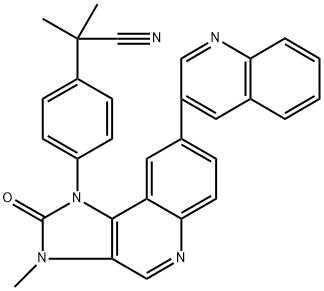

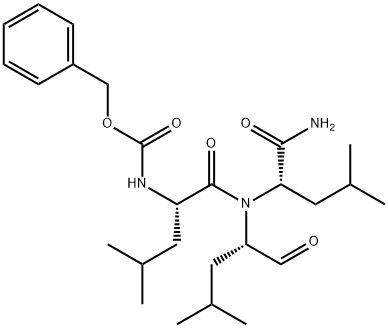
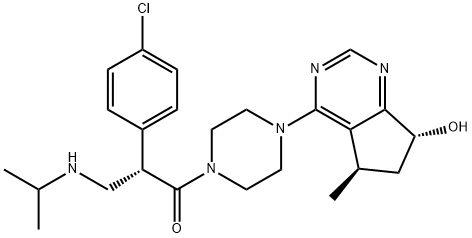
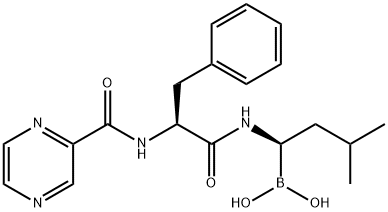
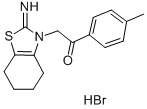
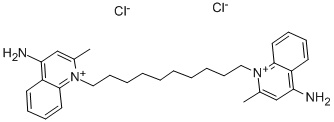
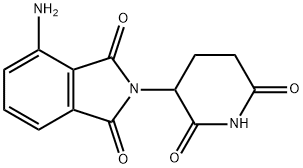
You may like
-
 Thermo Scientific Chemicals RITA CAS 213261-59-7View Details
Thermo Scientific Chemicals RITA CAS 213261-59-7View Details
213261-59-7 -
 RITA CAS 213261-59-7View Details
RITA CAS 213261-59-7View Details
213261-59-7 -
 p53 Activator III, RITA CAS 213261-59-7View Details
p53 Activator III, RITA CAS 213261-59-7View Details
213261-59-7 -
 1823368-42-8 98%View Details
1823368-42-8 98%View Details
1823368-42-8 -
 2-(3-(tert-butyl)phenoxy)-2-methylpropanoic acid 1307449-08-6 98%View Details
2-(3-(tert-butyl)phenoxy)-2-methylpropanoic acid 1307449-08-6 98%View Details
1307449-08-6 -
 Ethyl 3-(furan-2-yl)-3-hydroxypropanoate 25408-95-1 98%View Details
Ethyl 3-(furan-2-yl)-3-hydroxypropanoate 25408-95-1 98%View Details
25408-95-1 -
 2-Chloro-5-fluoro-1-methoxy-3-methylbenzene 98%View Details
2-Chloro-5-fluoro-1-methoxy-3-methylbenzene 98%View Details
1805639-70-6 -
 Lithium ClavulanateView Details
Lithium ClavulanateView Details
61177-44-4